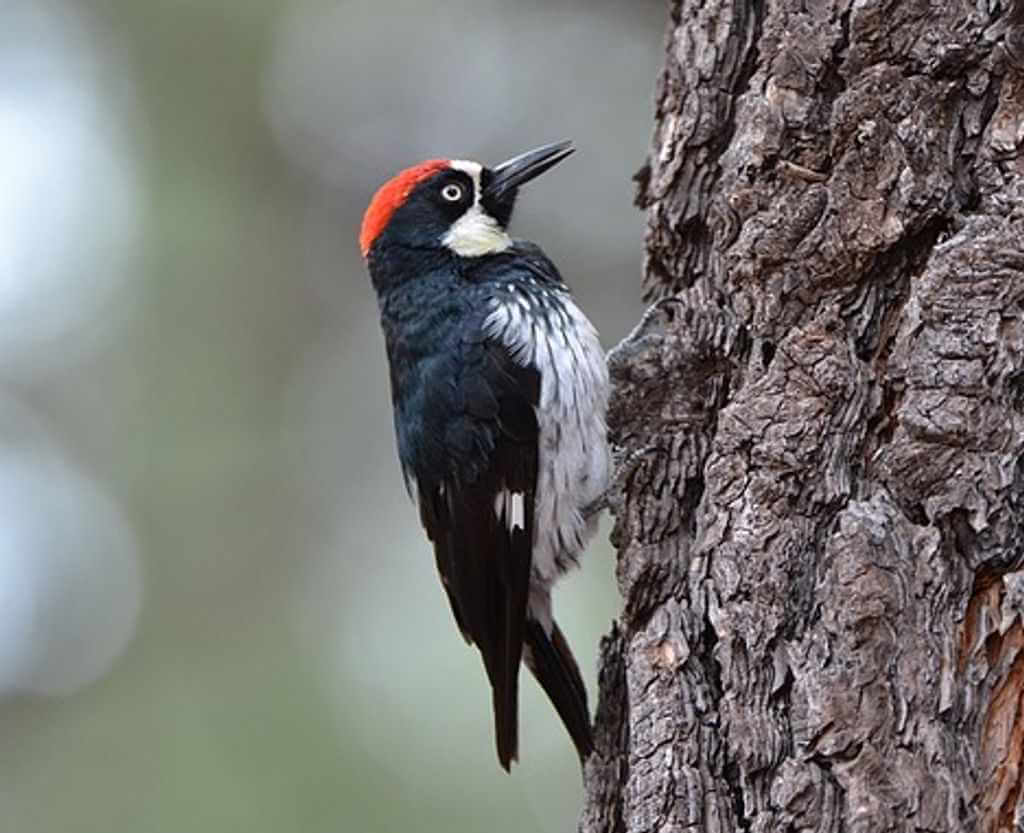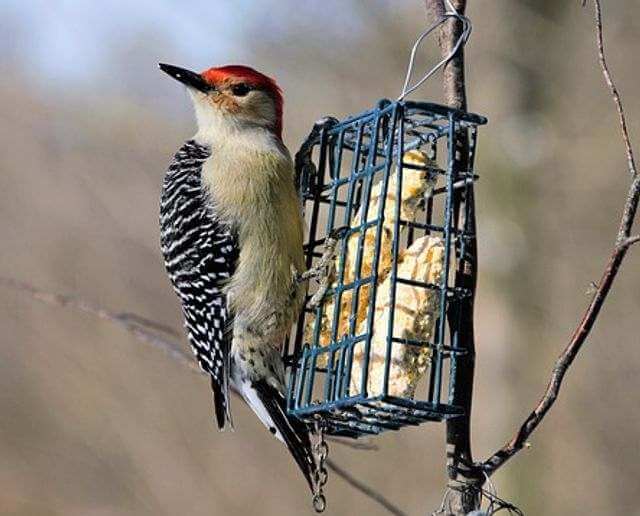Welcome to our comprehensive guide on the 15 types of woodpeckers found in Arizona! Woodpeckers are fascinating birds known for their drumming and pecking behaviors.
In this ultimate guide, we’ll explore the various species of woodpeckers native to Arizona, their unique characteristics, habitats, and behaviors.
Whether you’re a birdwatcher, nature enthusiast, or simply curious about Arizona’s wildlife, this guide is your go-to resource for learning all about these remarkable birds.
Table of Contents
- 1 Types of Woodpeckers in Arizona
- 1.1 Gila Woodpecker
- 1.2 Ladder-backed Woodpecker
- 1.3 Northern Flicker
- 1.4 Acorn Woodpecker
- 1.5 Hairy Woodpecker
- 1.6 Gilded Flicker
- 1.7 Arizona Woodpecker
- 1.8 Red-naped Sapsucker
- 1.9 Lewis’s Woodpecker
- 1.10 Williamson’s Sapsucker
- 1.11 Downy Woodpecker
- 1.12 Yellow-bellied Sapsucker
- 1.13 American Three-toed Woodpecker
- 1.14 Red-breasted Sapsucker
- 1.15 Red-headed Woodpecker
- 2 Frequently Asked Questions
- 3 Author
Types of Woodpeckers in Arizona
Gila Woodpecker
- Length: 8.3-9.8″ in (21-25 cm)
- Weight: 1.8-2.8 oz. (50-80 g)
- Wingspan: 15.7-16.9″ in (40-43 cm)
- Scientific Name: Melanerpes uropygialis
- Frequency of Occurrence: 35.33% (Statistic by: eBird)
- Where To Find Them: The Gila Woodpecker can be found in the Apache-Sitgreaves National Forest and at Devil’s Tower National Monument.
- How To Attract: First, make sure your yard is big and open enough for the Gila Woodpecker to fly around. Include plenty of trees and shrubs for the bird to perch on, as well as spaces in between for it to nest. Make sure there are no wires or other structures that could be dangerous for the bird. Another key thing you can do is provide fresh food sources. Offer worms, insects or seeds in a feeder that’s easy for the bird to access.
Description: The Gila Woodpecker is a medium-sized bird that inhabits the southwestern United States and parts of northern Mexico. The Gila Woodpecker ranges from southeastern Arizona and western New Mexico, south to Baja California Sur, and east to central Texas.
The Gila Woodpecker is the only species in its genus and family, the Pileated Woodpeckers. It feeds mainly on insects, but will also consume some fruit. The Gila woodpecker nests in holes in trees, typically 2-6 feet above the ground.
Ladder-backed Woodpecker
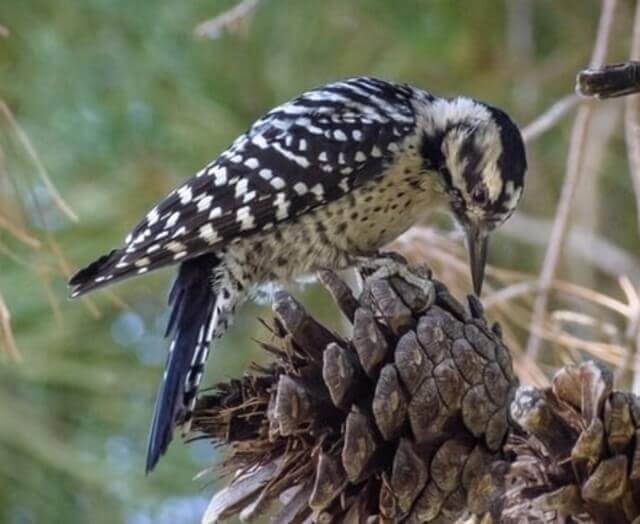
- Length: 5.9-7.5″ in (15-19 cm)
- Weight: 0.71-1.7 oz. (20-49 g)
- Wingspan: 13.0-13.2″ in (33-33.5 cm)
- Scientific Name: Dryobates scalaris
- Frequency of Occurrence: 16.93%
- Where To Find Them: The ladder-backed woodpecker is a species of bird that can be found in Arizona. They are mainly found in the southwest part of the state, but have been seen as far north as Douglas and Yuma counties.
- How To Attract: Plant shrubs and trees that provide nesting cavities for these woodpeckers. They especially like pines and spruces, but will also sometimes use old trees or tall shrubs. Place bird feeders with mealworms or black-oil sunflower seeds in strategic locations near potential nesting sites. Be sure the feeder is large enough so that the birds can easily access it, and make sure the food is fresh. Try adding a birdbath or other water source near your feeder. Water is important for these birds and can help keep them hydrated during hot summer days.
Description: The Ladder-backed Woodpecker is a North American woodpecker that ranges from the eastern half of Texas, west to California and south to Argentina. The Ladder-backed Woodpecker is found in subtropical and tropical moist montane forests, as well as secondary growth habitats.
They forage for insects, including beetle larvae, ants, termites, and caterpillars. The Ladder-backed Woodpecker nests in trees. The female lays three to five eggs and incubates them for 16 days.
Northern Flicker
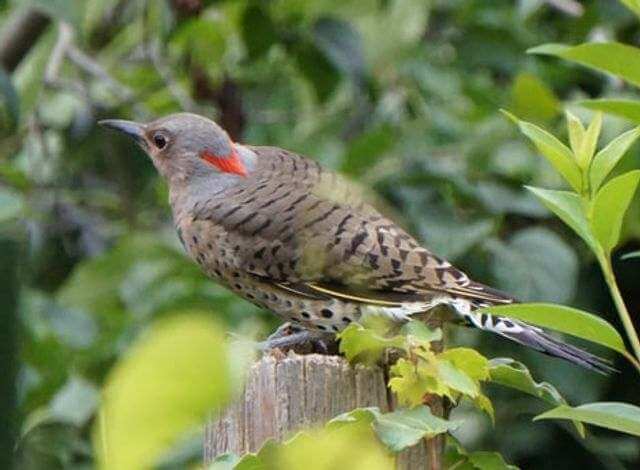
- Length: 11.0-12.0 in (28-31 cm)
- Weight: 3.9-5.6 oz. (110-160 g)
- Wingspan: 16.5-20.0 in (42-51 cm)
- Scientific Name: Colaptes auratus
- Frequency of Occurrence: 14.91%
- Where To Find Them: The Northern Flicker is a common bird in Arizona. They can be seen in many locations, but some of the best spots are at the Grand Canyon National Park and at Saguaro National Park.
- How To Attract: Some simple things you can do to help include providing a nesting site for the birds, planting flowering plants that provide food resources, creating a birdbath or water feature with floating plants, setting up perches in various locations around your property, and providing feeders filled with black-oi sunflower seed or dried fruit.
Description: The Northern Flicker is a common bird found in the eastern and central United States. The range of this bird includes most of New England and much of the Mid-Atlantic region, extending south to North Carolina. This species can also be found in parts of the Midwest, Southeast, and West.
The Northern Flicker’s habitat includes wooded areas with plenty of insects, but will also eat fruits, berries, seeds, and nuts. Nests are constructed mostly on trees, but have been known to nest in other structures such as eaves or under porches. The average lifespan for a Northern Flicker is about 10 years in the wild, but can live up to 20 years in captivity.
Related Post: How to Attract Northern Flickers to your Backyard (Easy)
Acorn Woodpecker
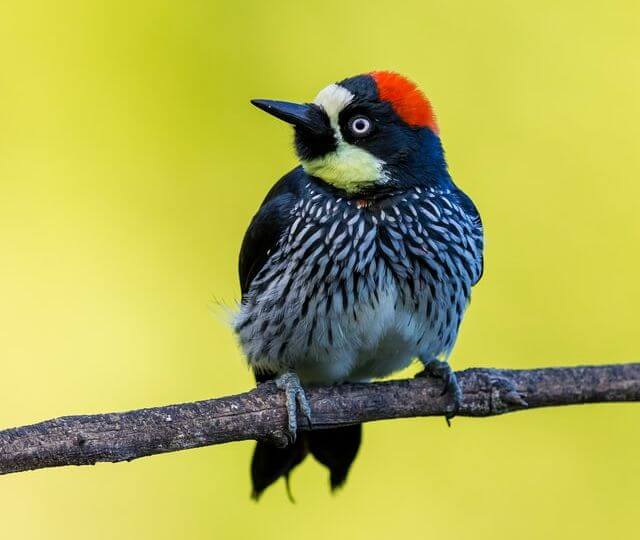
- Length: 7.3-9.4″ in (18.5-24.0 cm)
- Weight: 2.3-3.2 oz. (65-90 g)
- Wingspan: 13.8-17.7 in (35-45 cm)
- Scientific Name: Melanerpes formicivorus
- Frequency of Occurrence: 11.67%
- Where To Find Them: They can be found in the white-sand deserts, oak woodlands and pine forests of the state. Most commonly seen around Phoenix and Tucson, they are also present in areas near Flagstaff and Winslow.
- How To Attract: If you’re looking to attract the Acorn Woodpecker to your yard, there are a few things you can do. You can set up a feeder full of fresh acorns, build a nice perch for them to sit on, or place some fruit out for them to eat. All of these activities will help keep the woodpeckers around and make your yard more inviting.
Description: The Acorn Woodpecker is a small woodpecker found in the eastern United States. This species ranges from southeastern Maine south to central Florida and west to Oklahoma and Texas. The Acorn Woodpecker is also found in the Caribbean, Central America, and northern South America.
The Acorn Woodpecker inhabits mixed deciduous and coniferous forests, but it is not limited to any particular type of wooded area. This woodpecker feeds on insects, primarily acorns and insects such as, beetles, but sometimes spiders, or insects, tree sap, and fruit. Nests are located high in trees and are composed of dry leaves and twigs. Three to six eggs are typically laid.
Hairy Woodpecker
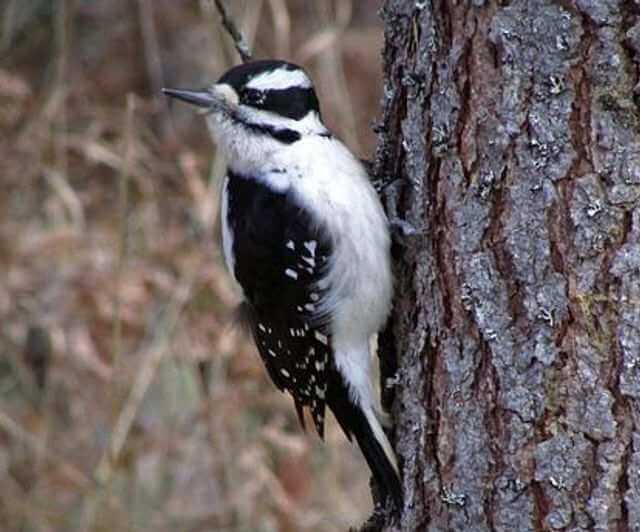
- Length: 7.1-10.2 in (18-26 cm)
- Weight: 1.4-3.4 oz. (40-95 g)
- Wingspan: 13.0-16.1 in (33-41 cm)
- Scientific Name: Picoides villosus
- Frequency of Occurrence: 3.87%
- Where To Find Them: The best locations for spotting this bird are in the White Mountains and in the Phoenix area.
- How To Attract: Choose a location that is well-lit and has plenty of trees and shrubs nearby. Hairy Woodpeckers like areas with lots of climbing options. Provide plenty of food and water sources. These birds feed on insects, so providing a variety of foods will keep them happy. Try scattering some seeds or fruit around the garden as well. Make sure the garden is free from predators such as cats and dogs. These animals could potentially chase away the hairy woodpecker or even prey on it if it’s not safe in your area.
Description: The Hairy Woodpecker is a medium-sized woodpecker found in the northeastern and north-central United States and parts of Canada. The Hairy Woodpecker ranges from southern Maine south to North Carolina, west to eastern Texas, and north to central British Columbia. It also inhabits portions of New England and Quebec.
This woodpecker feeds mainly on insects, but it will also take berries, seeds, and fruit when available. The nesting habits of the Hairy Woodpecker are not well known, but it builds a platform in a tree using sticks, large leaves, or bark. One to four eggs are usually laid.
Gilded Flicker
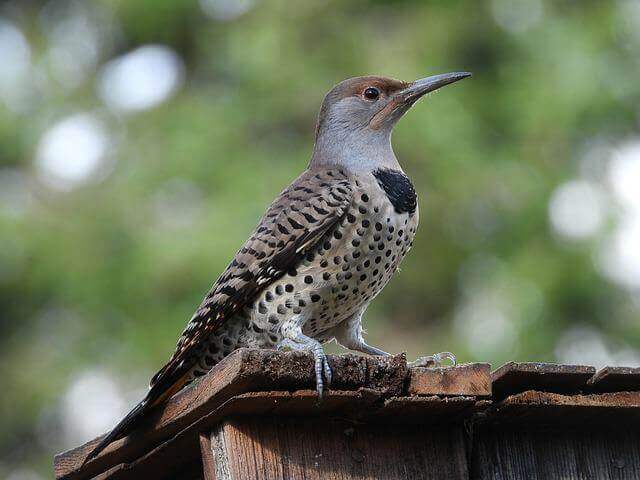
- Length: 11.0-12.6″ in (28-32 cm)
- Weight: 3.9-5.7 oz. (110-162 g)
- Wingspan: 16.1-20.5″ in (41-52 cm)
- Scientific Name: Colaptes chrysoides
- Frequency of Occurrence: 3.65%
- Where To Find Them: They can be found in Arizona, but their best location to view them is at the Saguaro National Park.
- How To Attract: There are many things you can do to attract the Gilded Flicker to your yard, but following these simple tips will ensure success. First and foremost, create a habitat that is both inviting and interesting to the bird. Plant trees and shrubs that provide shelter, food and nesting sites for the flicker. Include areas of open ground with plenty of flowering plants so they can feed and rest. Finally, make sure your yard is clean and free from debris or obstructions that could make it difficult for the bird to navigate.
Description: The Gilded Flicker is a small passerine bird found in the United States. The Gilded Flicker ranges across much of the eastern two-thirds of the country, from Massachusetts west to Oklahoma and Texas. It also inhabits the southern Appalachian Mountains and adjacent areas in Georgia and North Carolina. The Gilded Flicker is a fairly common bird in open woods, second only to the Blue Jay in numbers.
It feeds mainly on insects, but will also eat bird eggs, berries, and nuts. The Gilded Flicker builds its nest high in a tree, usually selecting a sapling or young tree not yet heavily impacted by termites or other wood-destroying insects. Four to six eggs are incubated by both parents for about 22 days.
Arizona Woodpecker

- Length: 7.0-7.9 in (17.8-20.3 cm)
- Weight: 1.2-1.8 oz. (34-51 g)
- Wingspan: 13.8-14.2″ in (35.1-36.1 cm)
- Scientific Name: Picoides arizonae
- Frequency of Occurrence: 3.11%
- Where To Find Them: The Arizona woodpecker can be found throughout the state, but some of their more popular locations include the White Mountains National Forest and Grand Canyon National Park.
- How To Attract: The best way to attract an Arizona Woodpecker is by providing them with plenty of trees to perch in, as well as food items such as acorns or insects.
Description: The Arizona Woodpecker is a medium sized woodpecker found in the southwestern United States and northern Mexico. It ranges from southern Arizona, through western New Mexico, and into northeastern Sonora, Mexico. The Arizona Woodpecker is most common in the rugged canyons of central and southern Arizona.
These birds forage for insects in trees, but have also been known to take small rodents from lawns. Nesting habits of the Arizona Woodpecker are not well understood, as few nests have been found. However, it is thought that these birds build their own stick nests high in trees.
Red-naped Sapsucker
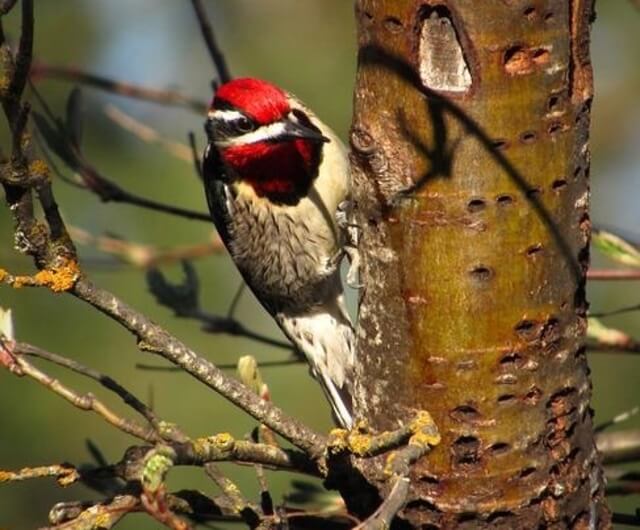
- Length: 7.1-8.7″ in (18-22 cm)
- Weight: 1.1-2.3 oz. (32-65 g)
- Wingspan: 15.7-17.3″ in (40-44 cm)
- Scientific Name: Sphyrapicus ruber
- Frequency of Occurrence: 2.86%
- Where To Find Them: The red-naped sapsucker can be found in a number of locations throughout Arizona, including the White Tank Mountains, the Verde Valley and the Coronado National Forest.
- How To Attract: This woodpecker is attracted to artificial bird feeders and other places where it can find food. In order to attract this bird to your yard, you will need to provide a place for it to eat, as well as some sort of shelter. You can also try hanging pieces of fruit or suet near your feeder in hopes that the sapsucker will visit.
Description: The Red-naped sapsucker is a migratory bird that can be found in parts of North America. It ranges from southeastern California to Minnesota and south to Central America. The sapsucker’s habitat includes deciduous and mixed forests, as well as orchards and other fruit-bearing trees.
The sapsucker feeds on insects, including wood ticks, ants, flies, beetles, moths and butterflies. In the winter, it will eat small rodents such as mice and voles. The sapsucker nests in tree cavities usually 50 feet or higher up. Four to six eggs are laid and the chicks fledge after about 12 weeks.
Related Post: 16 Interesting Sapsucker Facts Revealed!
Lewis’s Woodpecker

- Length: 10.2-11.0 in (26-28 cm)
- Weight: 3.1-4.9 oz. (88-138 g)
- Wingspan: 19.3-20.5 in (49-52 cm)
- Scientific Name: Melanerpes lewis
- Frequency of Occurrence: 0.5020%
- Where To Find Them: The Lewis’s Woodpecker can be found in various locations throughout the state including the White Mountains, the Verde Valley, and the Saguaro National Park.
- How to Attract: They favor tall trees with plenty of openings for nesting and foraging. In order to create their ideal habitat, you’ll need some tall trees in your yard that have lots of openings – preferably dead or unfinished trees. You can also install artificial nest boxes on your porch or roof. Other things that Lewis’s Woodpecker likes are feeders with mealworms, nuts, seeds, fruit and berries.
Description: The Lewis’s Woodpecker ranges from the Great Lakes to the Gulf of Mexico, and from Canada south to northern Florida. In the Northeast, it is found in Maine, New Hampshire and Vermont, as well as eastern Massachusetts. This woodpecker is a fairly common bird in much of its range and is not considered threatened or endangered.
It feeds on insects, especially cicadas, but also eats fruits, nuts and acorns which they love. The male Lewis’s Woodpecker typically builds a a nest in a tree cavity. The female lays 4-9 eggs around May and sometimes June.
Williamson’s Sapsucker

- Length: 8.3-9.8 in (21-25 cm)
- Weight: 1.6-1.9 oz. (43-56 g)
- Wingspan: 16.1-17.0 in (41-43 cm)
- Scientific Name: Sphyrapicus thyroideus
- Frequency of Occurrence: 0.4164%
- Where To Find Them: Williamson’s Sapsucker, a small wood-dwelling bird, can be found in most of Arizona. The best locations to see them include the White Mountains and the Verde Valley.
- How To Attract: First, try planting some types of fruit trees that are favored by Williamson’s Sapsuckers. Secondly, put up some bird feeders in strategic spots around your property. Finally, make sure to keep your yard clean and well-maintained – this will help attract the birds and make them feel at home.
Description: Williamson’s Sapsucker is a medium-sized woodpecker that can be found in the eastern United States. The range of this bird extends from Maryland to Florida, and south to Texas. The habitat of Williamson’s Sapsucker includes both deciduous and coniferous forests.
This bird mainly feeds on insects, but may also feed on tree sap. The breeding season for Williamson’s Sapsucker is from May to July, and the birds build their nests in tree cavities or under cliffs.
Downy Woodpecker
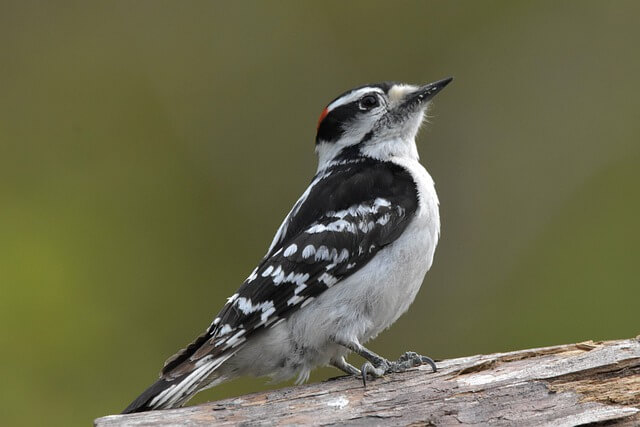
- Length: 5.5-6.7 in (14-17 cm)
- Weight: 0.7-1.0 oz. (21-28 g)
- Wingspan: 9.8-11.8 in (25-30 cm)
- Scientific Name: Picoides pubescens
- Frequency of Occurrence: 0.2525%
- Where To Find Them: There are several locations in Arizona where the Downy Woodpecker can be seen. One location is at the Copper Queen Mine State Park in Superior, Arizona. Another location is at Fort Huachuca near Sierra Vista, Arizona.
- How to Attract: Choose an attractive bird feeder. Downy Woodpeckers will often feed in the same spot day after day, so provide them with a consistent source of food. Consider a feeder with multiple ports so the birds can fill their bellies quickly. Add colorful branches and flowers to your yard. These elements will not only look nice, but they also contain nectar and pollen that attract these birds. Install a birdbath or fountain in your yard. This feature will provide water for the birds and offer them plenty of places to perch and drink. Create nesting boxes for these birds.
Description: Downy Woodpecker is a common bird in most parts of North America. It has a wide range that includes most of the United States and Canada, as well as parts of Mexico and Central America. Downy Woodpeckers are mostly found in deciduous and mixed forests, but they can also be found in coniferous forests.
They are mainly insectivores, but they will also eat small amounts of berries, seeds, and fruit. Downy Woodpeckers usually nest in tree cavities, of dead wood.
Related Post: How to Attract Downy Woodpeckers to Your Yard? (Easy!)
Yellow-bellied Sapsucker

- Length: 7.1-8.7 in (18-22 cm)
- Weight: 1.5-1.9 oz. (43-55 g)
- Wingspan: 13.4-15.8 in (34-40 cm)
- Scientific Name: Sphyrapicus varius
- Frequency of Occurrence: 0.1100%
- Where To Find Them: Some of the best locations to see this bird are at Roosevelt Dam and Lake Mead National Recreation Area.
- How to Attract: In order to attract the yellow-bellied sapsucker to your yard, you’ll need to provide plenty of places for it to drill. Include several trees with healthy bark and plenty of insect cavities. You can also install a feeder filled with fresh fruit or seed for the birds.
Description: The yellow-bellied sapsucker (Sphyrapicus varius) is a woodpecker found in the eastern and central US. The range extends from eastern New York, south to Florida, west to Oklahoma and Texas, north to Michigan and Wisconsin, and east to Ontario.
The yellow-bellied sapsucker typically inhabits areas with plentiful trees, such as hardwood forests, but it is also found in coniferous forests. The yellow-bellied sapsucker feeds mainly on insects, although it will also consume fruits, tree sap, and nuts. Breeding takes place from April through July. Nests are typically constructed in high trees near water sources.
American Three-toed Woodpecker

- Length: 8.3-9.1 in (21-23 cm)
- Weight: 1.6-2.4 oz. (44.8-67.9 g)
- Wingspan: 14.6-15.3 in (37-39 cm)
- Scientific Name: Picoides dorsalis
- Frequency of Occurrence: 0.0679%
- Where To Find Them: It can be seen in Arizona, specifically in the Phoenix metropolitan area and the Sonoran Desert.
- How to Attract: Plant trees that provide food and nesting opportunities for this species. Alder, birch, cottonwood, and willow are all good choices. Install bird feeders in areas where they will be able to find it. Make sure the feeder is well-stocked with seed and has a water source nearby.
Description: The American Three-toed Woodpecker is a small bird that inhabits the eastern and central United States. It has a range that includes most of New England, most of the East Coast from Florida to Maine, most of the Midwest, most of the South, and parts of western Canada. In general, this woodpecker prefers oak and hickory trees but will also use other trees such as beech or maple.
The American Three-toed Woodpecker is mainly an insectivore but will also eat small vertebrates. It constructs its nest in tree cavities typically near the topmost branches. The female lays four to six eggs and incubates them for about 14 days. The chicks fledge after about 21 days and are able to fly shortly thereafter.
Red-breasted Sapsucker

- Length: 7.9-8.7″ in. (20-22 cm)
- Weight: 1.9-2.2 oz. (53.0-63.5 g)
- Wingspan: 14.2-16.0″ in. (36-40.5 cm)
- Scientific Name: Sphyrapicus varius
- Frequency of Occurrence: 0.0600%
- Where To Find Them: The red-breasted sapsucker can be found throughout much of Arizona, but the bird is especially common in the Tucson metropolitan area. In addition to Tucson, other locations where you may see this species are at Saguaro National Park, Chiricahua National Monument, and Fort Huachuca.
- How to Attract: First, make sure you have plenty of food available for the sapsucker. This includes insects, worms, and berries. Second, create a comfortable nesting habitat for the sapsucker. This could include pieces of wood or artificial structures placed near a water source. Finally, keep your yard clean and free from clutter so that the sapsucker has plenty of space to perch and feed.
Description: The red-breasted sapsucker is a common bird found in the eastern United States. It spends its winter in the tropics and its summer in the eastern United States. The red-breasted sapsucker range includes parts of Arizona, Massachusetts, New York, Pennsylvania, Ohio, Michigan, Wisconsin and Minnesota.
The red-breasted sapsucker feeds on insects such as beetles, caterpillars, fruit and tree sap. It usually nests in trees but has been known to use nesting boxes. The female builds a nest in a cavity in a tree and lays 4-7 eggs, and incubates them. The chicks hatch about 28 days later and stay with their parents for about twelve weeks before they leave.
Red-headed Woodpecker
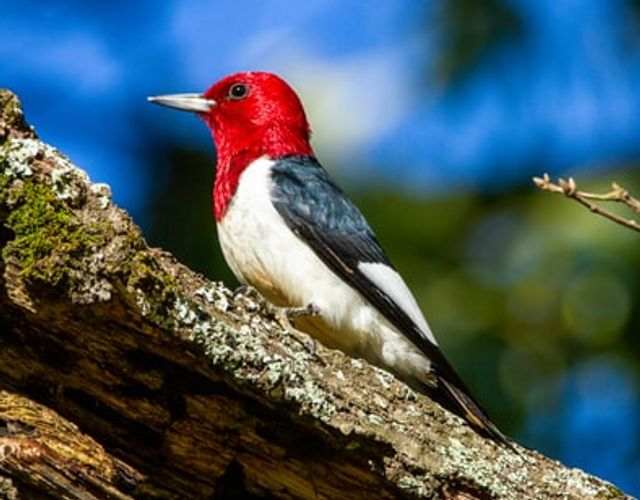
- Length: 7.5-9.1 in (19-23 cm)
- Weight: 2.0-3.2 oz. (56-91 g)
- Wingspan: 16.5 in (42 cm)
- Scientific Name: Melanerpes erythrocephalus
- Frequency of Occurrence: 0.0081%
- Where To Find Them: The Red-headed Woodpecker is a common bird throughout Arizona, with several locations where they can be seen. One of the best places to view them is in the Phoenix area, where they can often be found around golf courses and other large areas with plenty of trees. In the Tucson area, they are commonly seen at Papago Park and Saguaro National Park.
- How to Attract: Keep a varied garden. The Red-headed Woodpecker prefers a diverse diet, so include plenty of insects, fruits, and vegetables in your yard. Make sure there’s plenty of high-quality tree food too – these birds love to eat nuts and seeds! Plant trees. A big part of the Red-headed Woodpecker’s diet comes from eating fruit off of trees – planting lots of ornamental trees in your yard will give these birds plenty of tasty options. Not only that, but tall trees provide good nesting sites for these big birds. Provide water or a bird bath.
Description: The red-headed woodpecker is a common bird in the North American Midwest and Northeast. This woodpecker ranges from southern Ontario to New Hampshire, south to Florida and west to Minnesota. This species prefers deciduous and mixed forests, but will also inhabit areas of coniferous forest.
The red-headed woodpecker is primarily a feeder on insects, especially in the breeding season. During the winter, it sometimes forages for berries or other fruit. Nests are commonly found in trees, but have been known to nest in artificial cavities as well.
Related Post: Interesting Red-Headed Woodpecker Facts (Explained).
Frequently Asked Questions
How many woodpeckers are in Arizona?
There are fifteen species of woodpeckers in Arizona in 2022. The most common is the Gila woodpecker, which can be found throughout the state. Other common species include the ladder-backed woodpecker, acorn woodpecker, and northern flicker.
A few rare species that can be found in Arizona include the red-headed woodpecker, red-breasted sapsucker, and American three-toed woodpecker.
Are there any woodpeckers in Arizona?
Arizona has a variety of habitats that are perfect for woodpeckers. Some of the areas that have large trees with plenty of dead wood that is easy for these small birds to access are the forests around Flagstaff, the Pinal Mountains, and the Saguaro National Park.
There are also some smaller towns in Arizona where there are trees that have been damaged by humans or other animals and provide an opportunity for these birds to find food.
How do you get rid of woodpeckers in Arizona?
When it comes to pesky woodpeckers, there are a few ways to get rid of them. First and foremost, keep your property clean and free of clutter, so the birds can’t perch or nest.
You can also try using bird repellents or noise deterrents if they’re causing problems in your yard. Depending on the circumstances, you may need to call a professional service.
What time of day are woodpeckers most active?
Woodpeckers are most active in the morning and evening hours. They are also most active during summer months when they are searching for food.
Are there flickers in Arizona?
Northern and Glided flickers are common residents of the state. These small birds can be seen darting through the trees or perching on a high branch, eating insects or fruit. Although they may seem elusive, you’re likely to see them if you explore your local area.
Where do Gila woodpeckers live?
Gila woodpeckers are found in the southwestern United States and northwestern Mexico. These woodpeckers inhabit pine-oak forests, and often excavate tree cavities for food. Gila woodpeckers are territorial, and will attack any other bird that enters their territory.
Related Post: 38 Most Common Birds in Arizona for 2022 (Photos & Info)

